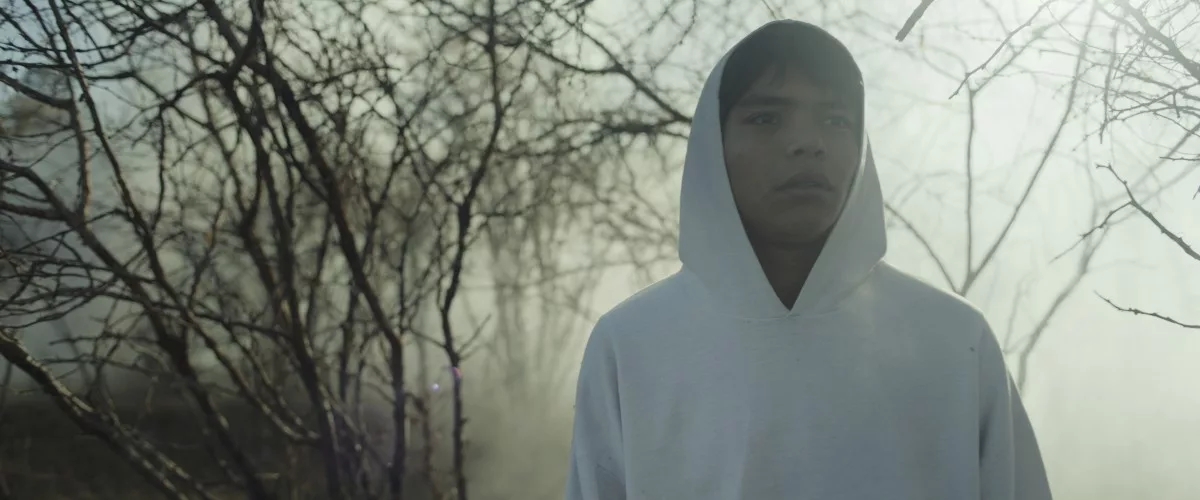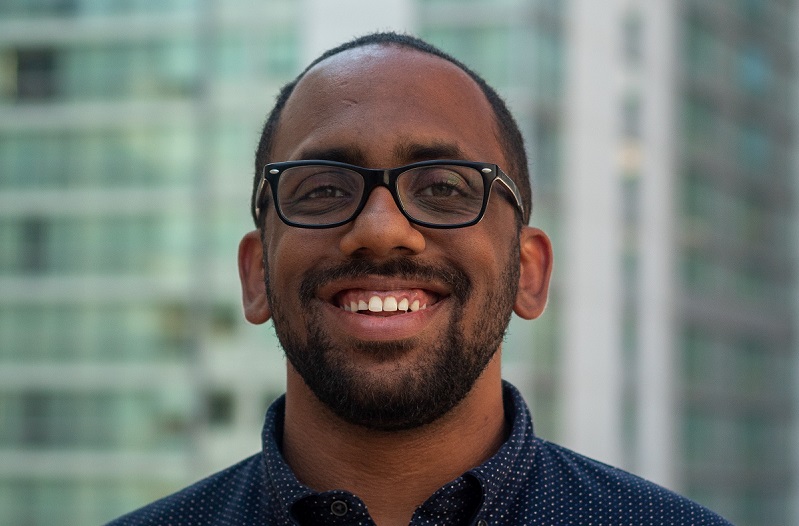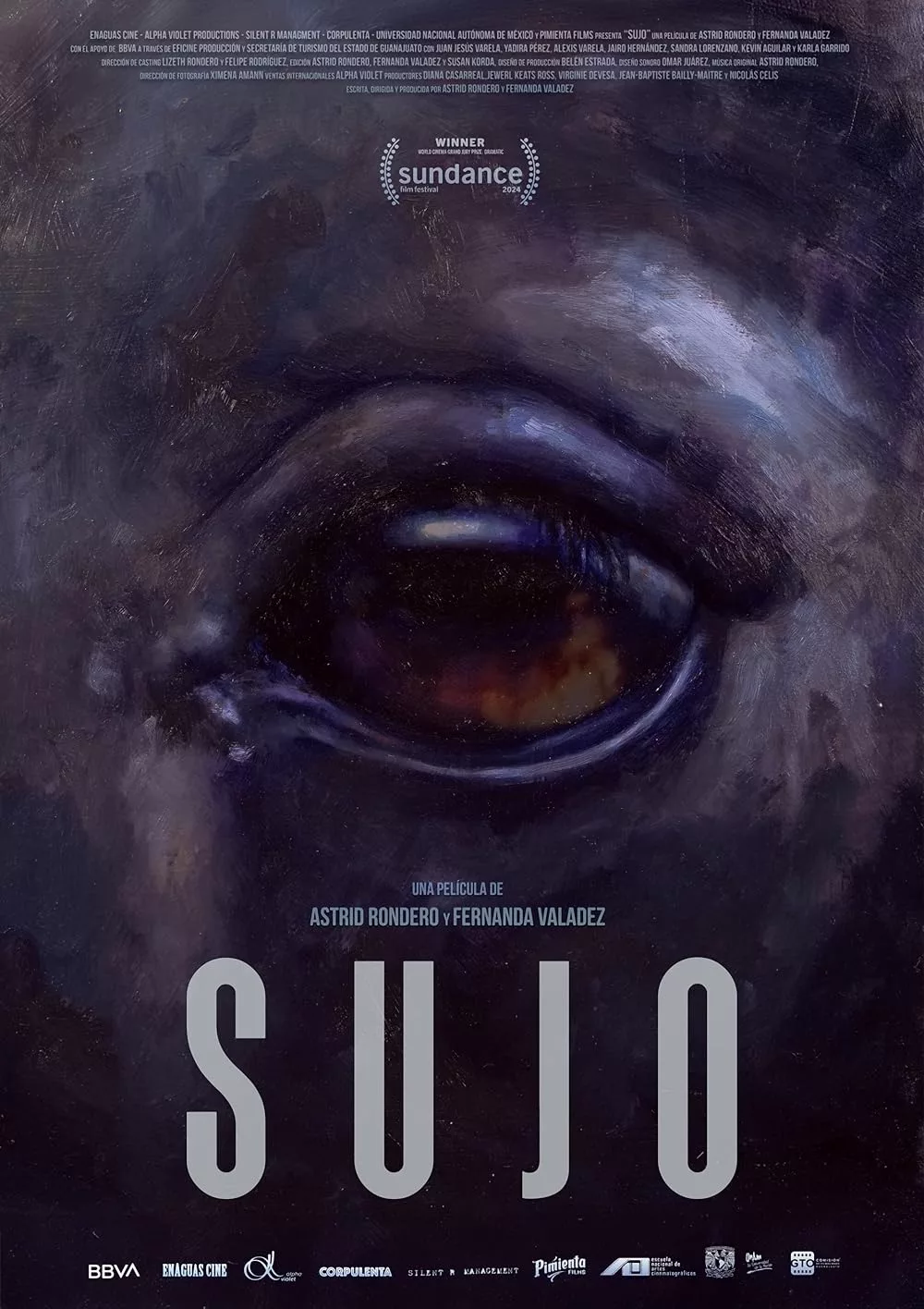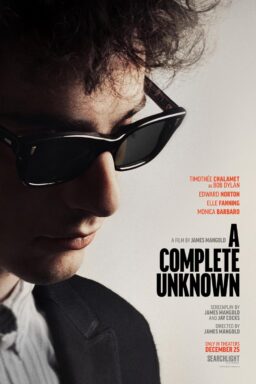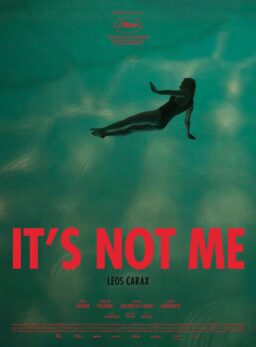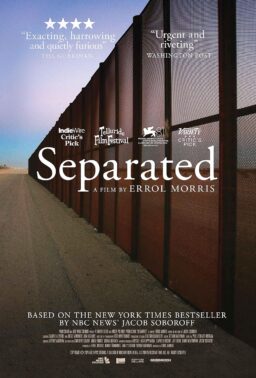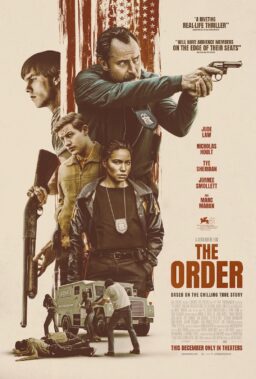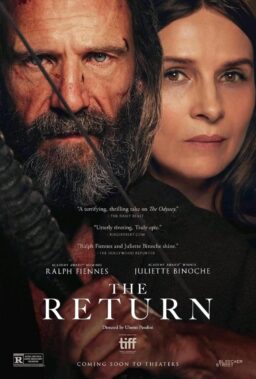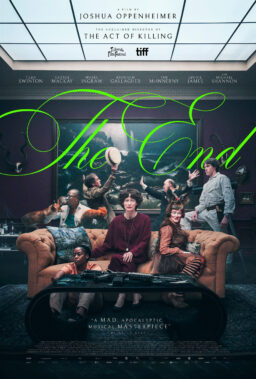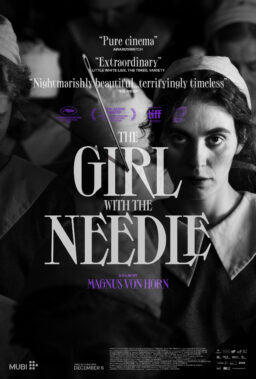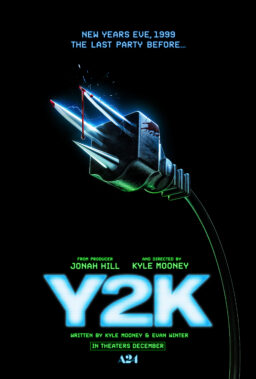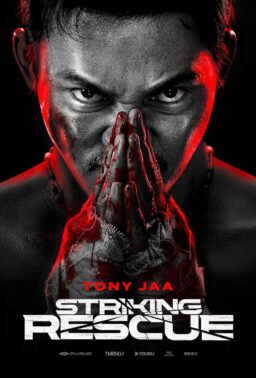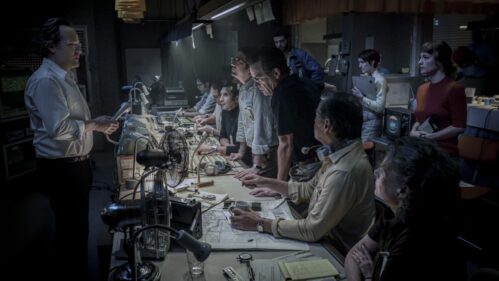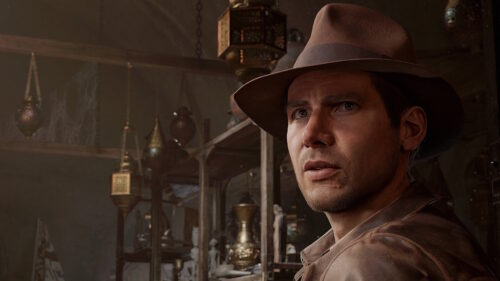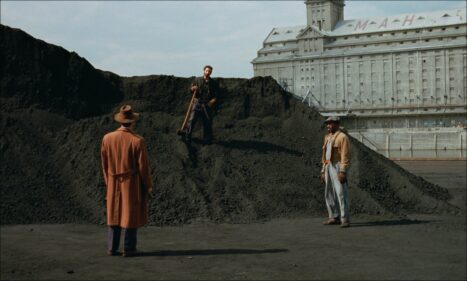“Sujo” is a direct, unvarnished window into the near inescapable pressure of cyclical violence. It begins with a shadowy memory. A rugged horse peers into an innocent boy’s eyes; its owner can be heard saying, “He’s always getting away.” The camera holds for the boy named Josue to look wide-eyed into the lens before cutting to a title card: “Part 1: Josue ‘El Ocho.’” We’re within the interior of a car next, seen from the point of view of Josue’s young son Sujo (played by Kevin Aguilar as a child). The windshield is foggy, but we can catch the faint hint of two agitated bodies meeting: Josue, no longer a boy but a sicario, and Genaro (the son of Josue’s boss)—form the outline of Sujo’s painful future. Josue murders Genaro, necessitating his own murder by the cartel while putting Sujo’s life in danger.
While you’d expect Mexican writer/directors Astrid Rondero and Fernanda Valadez’s bleak vision to hurriedly traverse bleaker roads, they instead craft a brooding dreamlike vision. “Sujo” is an evocative film guided by magic and compassion. Sujo’s aunt Nemesia (Yadira Pérez), a witch, knows Josue is dead when she sees his apparition walking through the craggy brush outside her secluded home. She never understood what her now-deceased sister saw in the vicious Josue, so she isn’t too heartbroken to learn of his demise. But she knows Sujo is in danger. Through the help of the kid’s other aunt, Rosalía (Karla Garrido), they make a deal with the cartel leader. Sujo will be raised by Nemesia on the promise that he never enters town.
Set in the rural village of Michoacán, “Sujo” is divided into four chapters, each focusing on significant people in Sujo’s life. In “Part II: Nemesia,” the haziest and therefore the most distant portion of the film, he is raised by his aunts and given his father’s car. The greyish photography of the jagged landscape by DP Ximena Amann foretells the difficulty for any kind of life to flourish here. Sinister shadows and looming silhouettes further animate the undeniable dread that looms over Sujo’s precarious life. In “Part III: Jai & Jeremy,” Sujo and his cousins fall into a life of crime after they restart Josue’s ghostly abandoned car.
Though “Sujo” isn’t necessarily a horror film, it is filled with lived horrors whose presence is perpetually felt. Sometimes, these specters physically manifest; other times, they exist within the souls and memories of these characters. For Sujo, his father—whose local legacy is of being a traitor to the gang—has never really died. It’s why, despite Nemesia’s best efforts, Sujo begins to follow a similar path as Josue. Between the shabby houses, the derelict main street of the town, and the lethargic rhythm of daily life, a modus operandi of getting rich or die trying takes over. Only through wealth obtained by becoming mules for the cartel can Sujo and his cousins dream of providing improved homes for their loved ones and building the kind of legacy that says “I existed.”
These understandable desires eventually force Nemesia to put Sujo on a bus to Mexico City, where he works late nights loading trucks to pay the rent on his tiny room in a tenement space. During the day, Sujo often hangs around the local high school, blending into the student body as he wistfully imagines what it would be like to live their life. Along the way, he meets a literature teacher (Sandra Lorenzano) who sees potential in the young man. Nevertheless, Sujo’s past catches up with him in such an unexpected and emotionally difficult fashion that it tests his loyalty to his family and his mentor.
“Sujo” shares plenty of themes with Valadez’s “Identifying Features,” also co-written with Rondero. Both films acutely detail Mexico’s poverty through humanist eyes, finding rich narrative potential in the act of journeying. In “Identifying Features” it’s a mother searching Mexico’s perilous countryside, itself beset by brutality, for her lost son who left to cross the border into America. A similar hopelessness of escaping cycles of poverty and violence pervades “Sujo,” though with a greater sense of hope.
While that fragile optimism is inherent to Valadez and Rondero’s layered script, Varela as Sujo also plays a sizable role in landing that mood. Valera’s sensitive eyes are persistently searching and observing, even while his posture is hunched. The physical aspects of his performance project a kid who knows how to survive but whose own feeling of potentiality is undimmed. He exists between two worlds and can enter a better one if someone only sees the light behind his eyes. His name further exemplifies his constant sense of becoming. In an earlier scene, no one knows what his name means — pointing to a future that eschews any predetermined destination.
In quite possibly the best final scene of any film of the year—one that recalls the film’s interests in nature versus nurture and its awareness of the innate goodness that every person begins life with—the directors return to the opening scene. “You’re the most beautiful thing I’ve ever seen,” says the young Josue to the horse. The same could easily be applied to Valadez and Rondero’s poignant, otherworldly character study.
